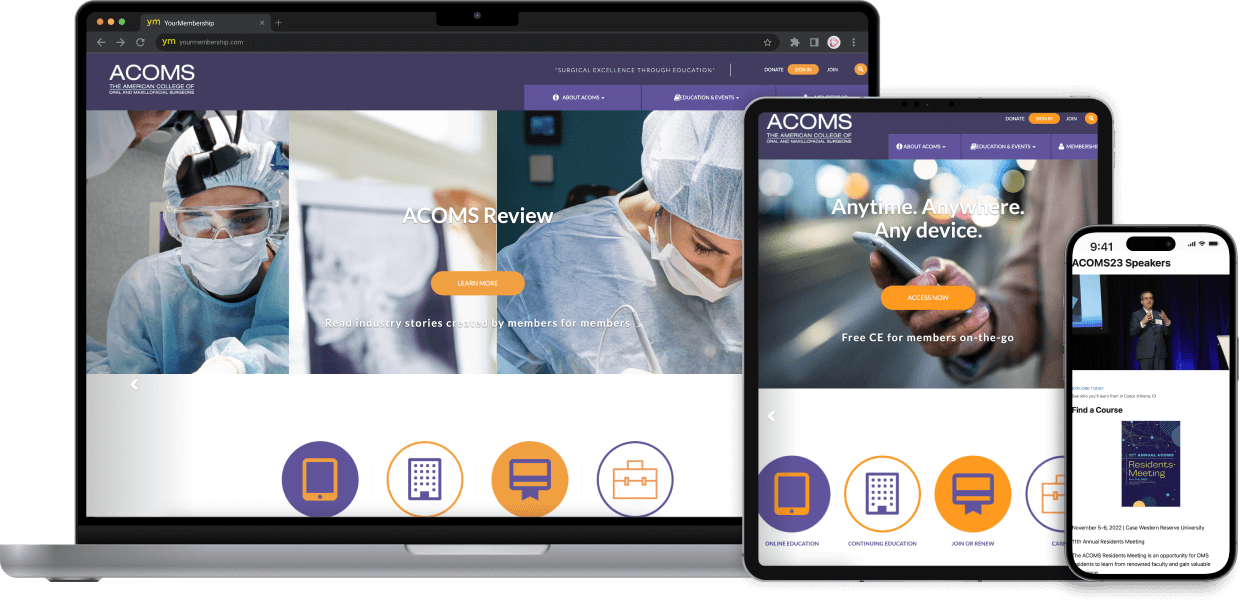Unlock the Secrets to Effective Website Design for Your Company Growth
Unlock the Secrets to Effective Website Design for Your Company Growth
Blog Article
Trick Strategies for Applying User-Centric Site Design to Increase Engagement
When thinking about the implementation of user-centric web site layout, certain approaches contribute in enhancing engagement. Comprehensive study right into user requirements and choices develops the structure, leading the development of user identities to educate design options. User-friendly navigation and responsive interfaces are critical, guaranteeing convenience of access across all devices. On the other hand, individualizing content improves individual contentment, and robust access features broaden reach. These methods jointly promote an even more significant online experience. However how do these components collaborated effectively, and what useful steps can be required to guarantee their effective combination?
Comprehending Customer Requirements
Understanding customer needs is a basic action in the procedure of user-centric website layout. This method makes sure that the website straightens with the expectations and needs of its target audience, inevitably causing enhanced individual fulfillment and engagement. The first phase includes conducting thorough research study to collect understandings into individual actions, preferences, and discomfort points. Techniques such as surveys, meetings, and user screening can supply important qualitative and measurable data regarding just how individuals interact with the site.
Evaluating this data permits developers to produce comprehensive individual personalities that represent the various sectors of the target market. These personas assist notify style choices by highlighting specific user goals and challenges, guiding the development of features that address these demands successfully. Recognizing the context in which customers run-- such as their atmosphere, device preferences, and time constraints-- can further refine the style strategy.
Compassion plays a critical duty in this procedure, allowing designers to see the web site from the individual's point of view. By prioritizing user needs, the layout procedure ends up being extra concentrated, avoiding the addition of unnecessary aspects that could clutter the user experience. Ultimately, a deep understanding of customer needs contributes in crafting an internet site that is both useful and purposeful.
Designing Instinctive Navigating
Having developed a thorough understanding of individual requirements, the following action in user-centric web site style involves developing user-friendly navigating. Reliable navigation is basic to customer satisfaction, influencing just how easily users can locate information and total tasks. To attain intuitive navigation, developers must focus on simpleness and clarity, making certain that the navigation framework is sensible and consistent throughout the website.
Organizing content into a clear hierarchy is crucial. Website Design. The usage of acquainted labels and symbols can guide individuals easily, decreasing cognitive lots and enhancing the overall individual experience. A properly designed navigation bar need to be plainly placed, enabling individuals to identify their current location and conveniently explore other sections of the web site
It is also vital to include interactive elements such as breadcrumbs and search performances to aid customers in navigating complex websites. These functions supply extra paths and boost the ease of access of material, accommodating numerous customer choices and habits.
Examining navigation with actual customers is important to identify possible pain factors and make sure functionality aligns with customer assumptions. Regular responses loopholes and iterative enhancements can assist preserve an effective navigation system that adjusts to developing user requirements, ultimately increasing engagement and complete satisfaction.
Creating Receptive User Interfaces
Usually, producing receptive user interfaces is a crucial element of modern website design, ensuring that sites are practical and easily accessible across a wide range of tools and screen dimensions (Website Design). This versatility is crucial in a landscape where users access web content using smart devices, desktops, laptops, and tablet computers, each advice with varying positionings and resolutions. The primary goal of responsive design is to improve customer experience by preserving optimal readability and use, no matter of the gadget used
To accomplish this, internet developers utilize adaptable grid layouts, fluid images, and CSS media inquiries. Versatile grids permit website components to resize proportionally, while fluid images ensure visuals scale appropriately without shedding high quality. Media questions play a vital role by applying different styles based on the gadget's characteristics, such as width, orientation, and elevation, hence tailoring the design to the user's display.
In addition, responsive interfaces add to improved seo (SEARCH ENGINE OPTIMIZATION) by offering a smooth user experience, which consequently can decrease bounce rates and increase site engagement. In recap, taking on responsive design is not just a technological consideration however a necessary technique for fostering a user-centric web environment that meets the needs of a varied audience.

Personalizing Content Experience
Customizing content experience is an important element of user-centric site style that entails tailoring web content to satisfy the distinct preferences and habits of private users. This strategy not only boosts user complete satisfaction but additionally fosters much deeper engagement, as site visitors are much more likely to engage with material that reverberates with their passions and demands. By leveraging information analytics and customer comments, companies can determine patterns and patterns that inform the customization of internet content.
Integrating personalization strategies can vary from straightforward adjustments, such as suggesting products based upon searching history, to more innovative methods like dynamic content that adjusts in real-time to a customer's communications. For instance, personalized touchdown web pages can substantially boost conversion prices by offering individuals with relevant information and provides that line up with their previous activities and preferences.
Moreover, utilizing man-made knowledge and machine discovering can better refine content personalization by constantly learning from user actions and adapting to emerging trends. This not only enhances the customer's trip but likewise builds brand name loyalty, as customers feel understood and valued. Ultimately, individualizing the content experience is an essential method for organizations aiming to produce a more engaging and significant interaction with their target market.
Enhancing Availability Features
Enhancing availability functions is a basic element of user-centric website style, making certain that electronic web content is usable by everybody, consisting of individuals with specials needs. This strategy not just adheres to lawful standards such as the Americans with Disabilities Act (ADA) and the Internet Web Content Accessibility Guidelines (WCAG) yet additionally significantly broadens an internet site's target market reach. By integrating functions like keyboard navigation, display viewers compatibility, and alternate text for pictures, web sites end up being more comprehensive, providing a seamless experience for customers with visual, acoustic, or electric motor impairments.
Integrating responsive style aspects is vital, helping with access on different tools and screen sizes, thereby suiting individuals with different choices and needs. Comparison ratios and message size changes can enhance readability for people with aesthetic challenges. Giving concise and clear content framework, click resources such as lists and headings, help comprehension and navigation, specifically for users with cognitive impairments.
Regular ease of access audits need to be carried out to identify and remedy possible barriers, making certain continued compliance and functionality. By focusing on ease of access, companies not just foster inclusivity yet also enhance total user interaction and satisfaction, eventually driving greater conversion rates and strengthening brand commitment.

Conclusion
Incorporating user-centric style approaches considerably improves internet site engagement by prioritizing the requirements and preferences of individuals. Thorough research study helps with the production of user identities, directing targeted style decisions.
Detailed research right into user needs here are the findings and choices creates the foundation, guiding the production of user personas to inform design choices. Methods such as surveys, meetings, and individual screening can supply useful qualitative and quantitative data about just how individuals connect with the site.
By prioritizing user needs, the style procedure becomes much more focused, protecting against the inclusion of unnecessary components that can clutter the individual experience. Efficient navigating is fundamental to customer complete satisfaction, affecting just how quickly customers can find information and full tasks. The usage of familiar labels and icons can guide customers effortlessly, lowering cognitive lots and boosting the overall user experience.
Report this page